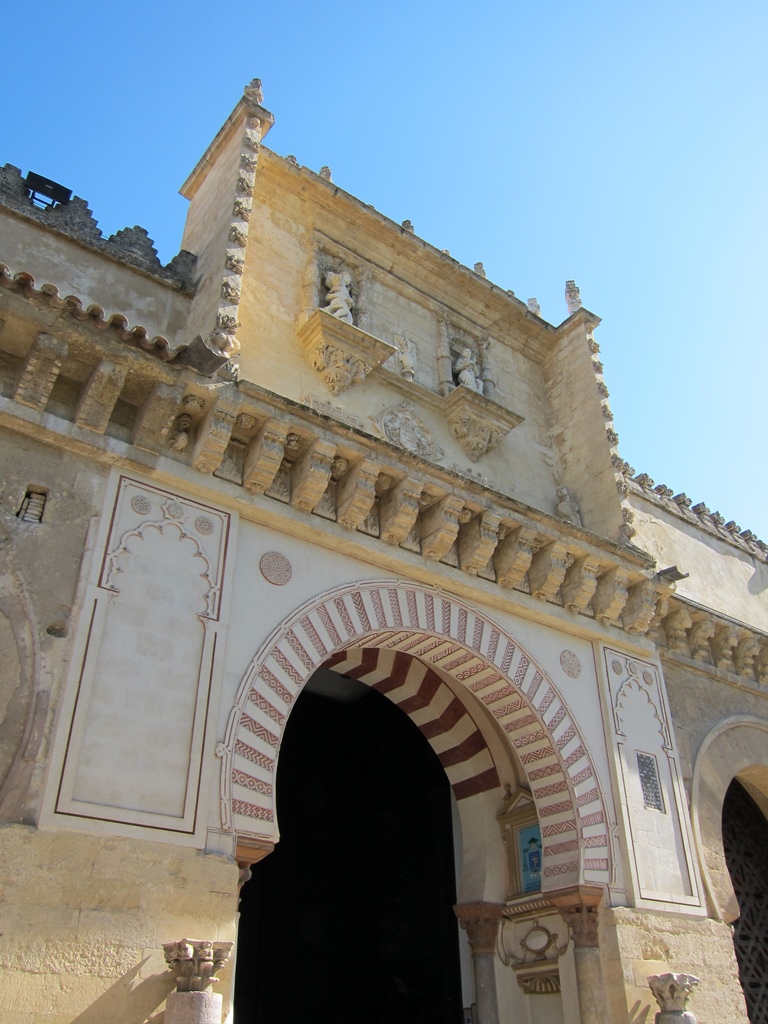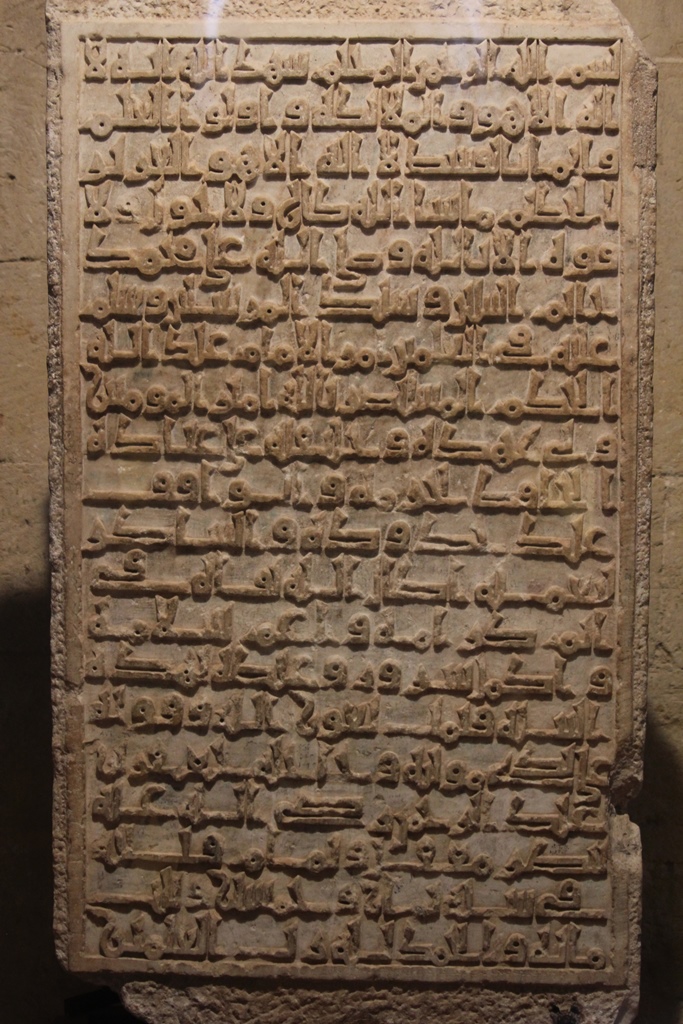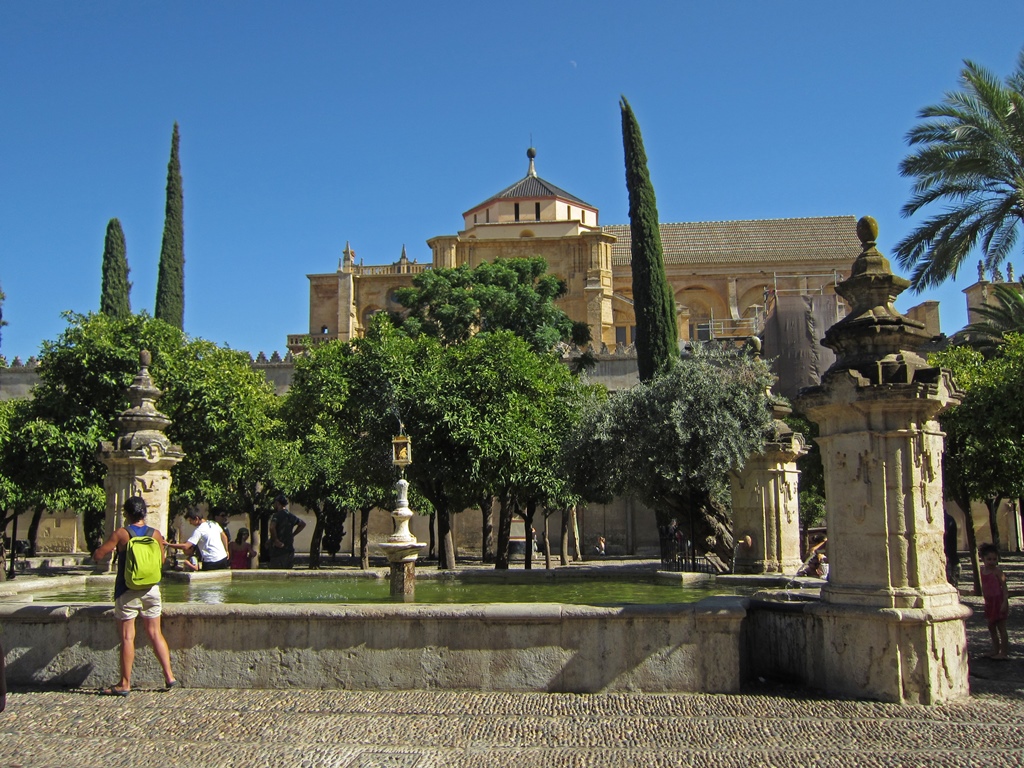So our main reason for coming to Córdoba was to see
the Mezquita. And while there are other
things to see in the city, this is the same reason nearly all visiting tourists stop here.
Though the confusion would be understandable, "Mezquita" is not a pesky Spanish insect, but
is instead a Spanish word meaning "mosque". This one is both immense, occupying an area of
about 400 feet by 600 feet, and old – its last Moorish expansion was completed more than a
thousand years ago, and its construction began centuries before that. The mosque is a short
distance north of the Guadalquivir River and is oriented roughly north-south.
The first version of the mosque was built between 786 and 788 under Al-Andalus emir Abd al-Rahman
I, who had earlier fled Syria to avoid assassination (his family, the Umayyads, was being
extinguished by its rivals, the Abbasids) and was the first to break connections between
Al-Andalus and Damascus. The mosque was expanded southward between 833 and 855, during the rule
of Abd al-Rahman II, and further in the same direction a century later, between 961 and 966,
under al-Hakam II. At this point the mosque had expanded as far south as it easily could (it was
getting too close for comfort to the river), but it was still not big enough to accommodate the
population of Córdoba, which had become quite large (being the capital of the Caliphate). So in
987, the third and last expansion was begun in an eastward direction, which involved taking over
a street and a number of houses which had been built there. This occurred under the rule of
caliph Hisam II (though it is usually referred to as the Almanzor expansion, a reference to the
prime minister at the time who was a famously successful warrior), and was completed in 990.
On our way to the Mezquita's entrance we walked along its western wall for a distance, noting that
the mosque is surrounded by many Moorish-style doors (there are 19 in all), in varying states of
repair. All have Christian names now, and most don't go anywhere anymore. Here are a few:
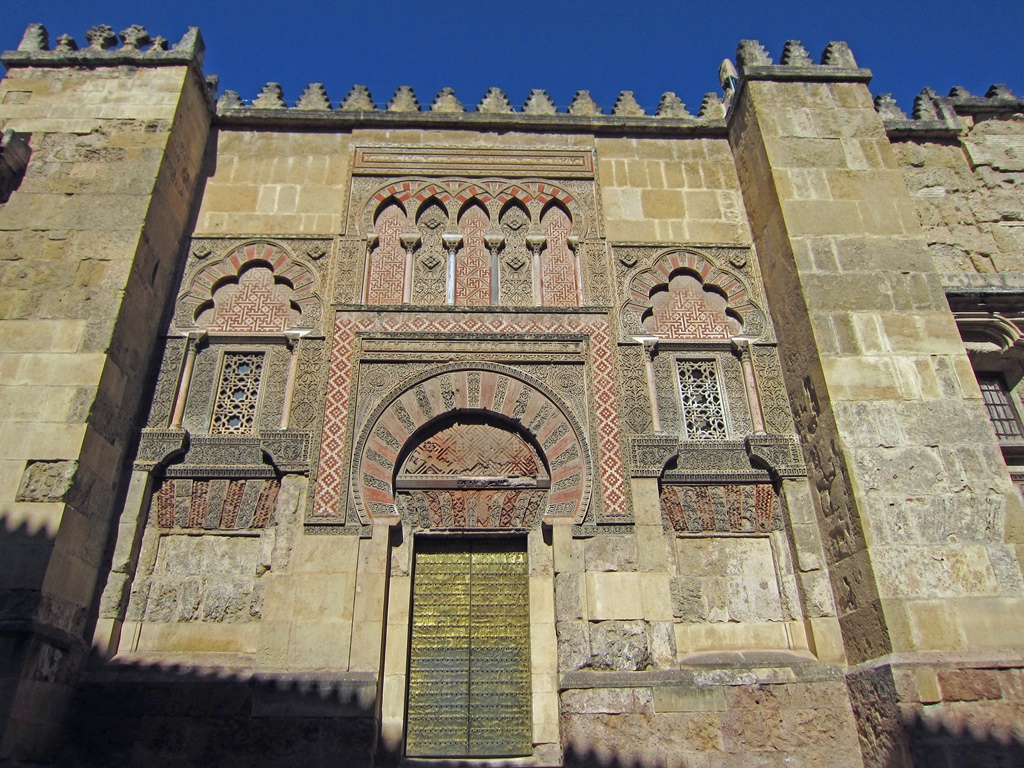
Puerta del Espíritu Santo
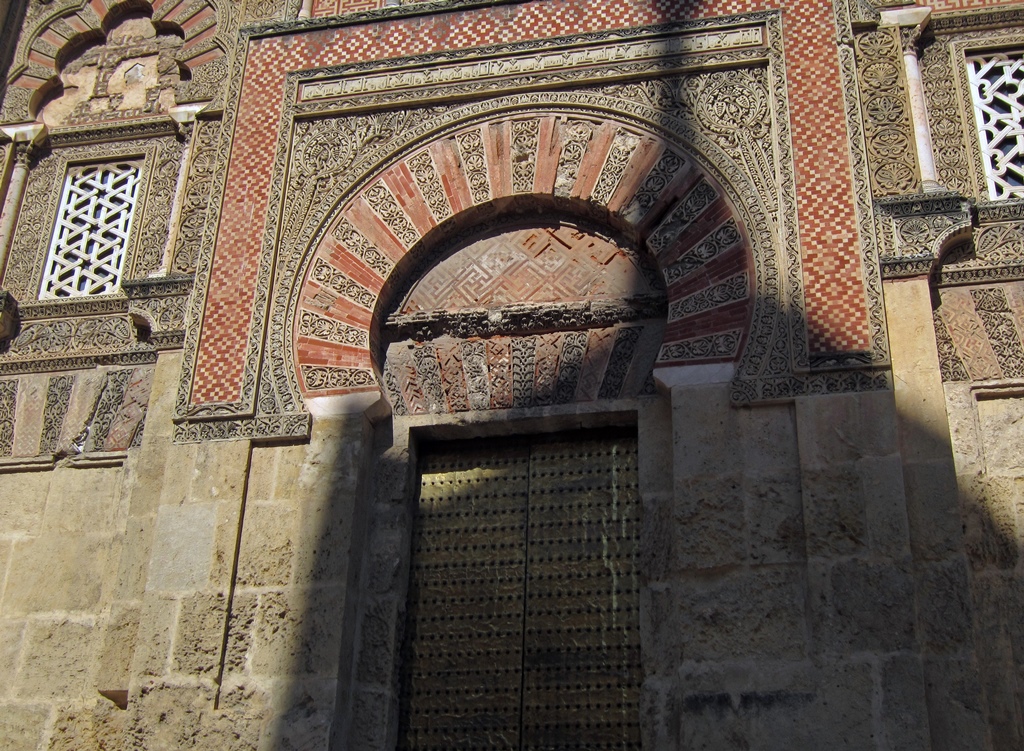
Puerta de San Ildefonso
Puerta del Perdón
We eventually found a door that led through the wall into a large courtyard on the north side of the
mosque. This courtyard is called the Patio de los Naranjos; yes, this is the same name as the
courtyard at Seville's cathedral,
and is also named for the presence of many orange trees. It's
surrounded by an arcade along the inside of the Mezquita's outer wall and, in addition to trees,
holds some fountains whose ancestors were once used by Córdoban Muslims to perform ablutions prior to
prayers. The courtyard is paved with picturesque pebbles which look nice but which are kind of hard
on the feet.
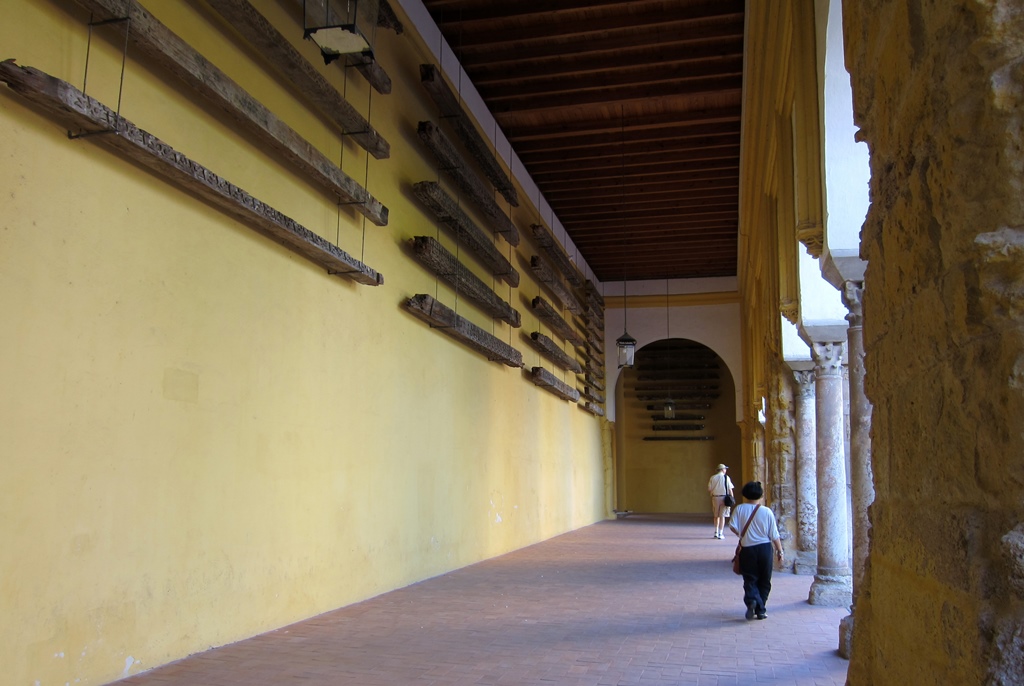
Nella and Bob in West Gallery
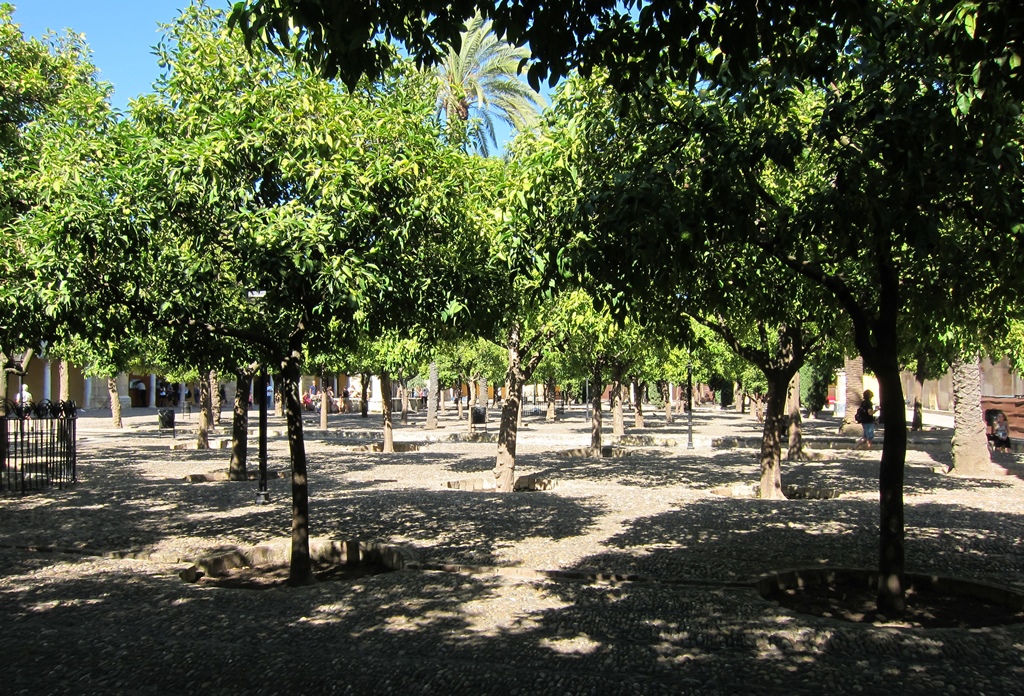
Patio de los Naranjos

Fountain of Santa María

Paving Pebbles
Rising above the north wall of the courtyard, with the wall apparently passing through it, is a
bell tower in the position once occupied by the mosque's minaret, from which Córdoban Muslims
were once called to prayer. The bell tower was apparently built by the mosque's Christian
inheritors around the minaret at a time when the minaret had reached a state of ruin (some of
its remains still exist within). The bell tower itself had to be rebuilt following the
gigantic 1755 Lisbon earthquake.

Bell Tower

Mezquita Wall and Bell Tower
The entry into the mosque itself is found on the south side of the courtyard, through a door
called the Puerta de las Palmas.
Puerta de las Palmas
On entering the mosque, there is no mistaking the presence of arches. The arches are stacked
one on top of another, with each archway being surmounted by a horseshoe-shaped arch below a
higher, more semicircular arch. Each double arch is flanked by two fairly thin support columns,
and is striped in red and white. And there are a whole lot of them.
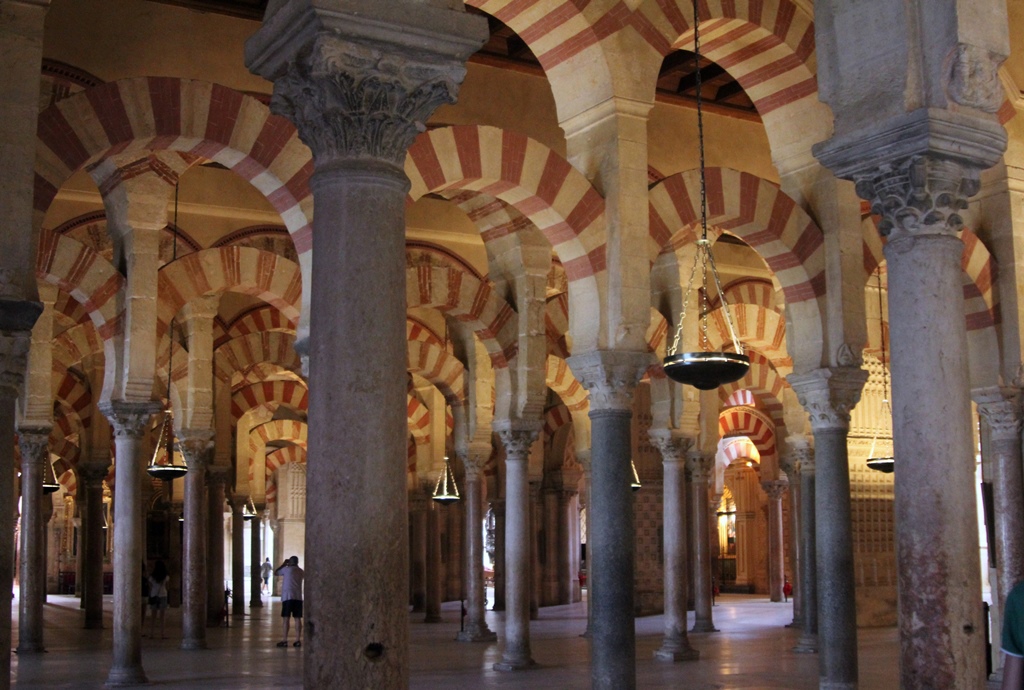
Arches

Nella and Arches
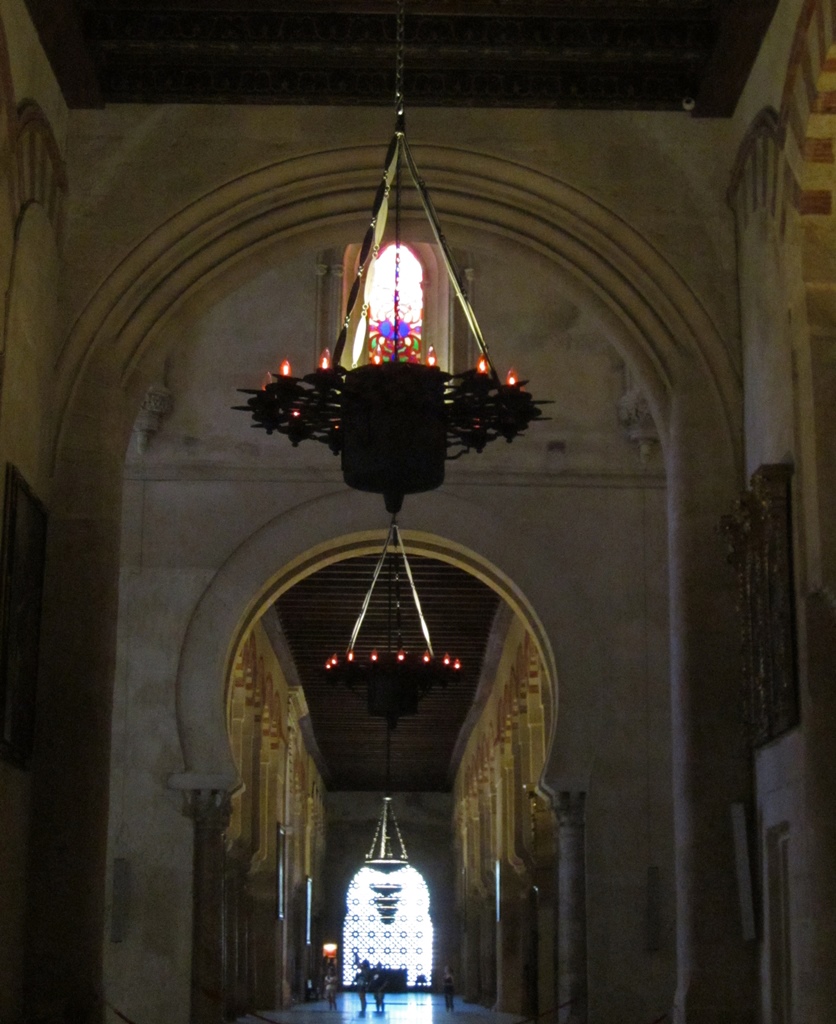
Corridor
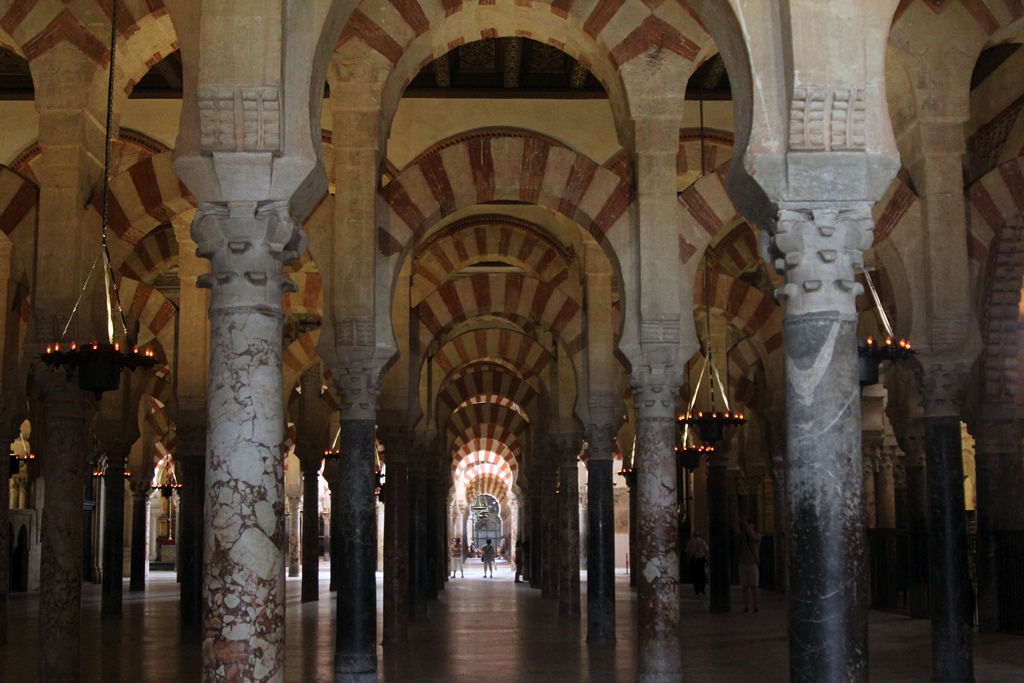
Arches and Columns
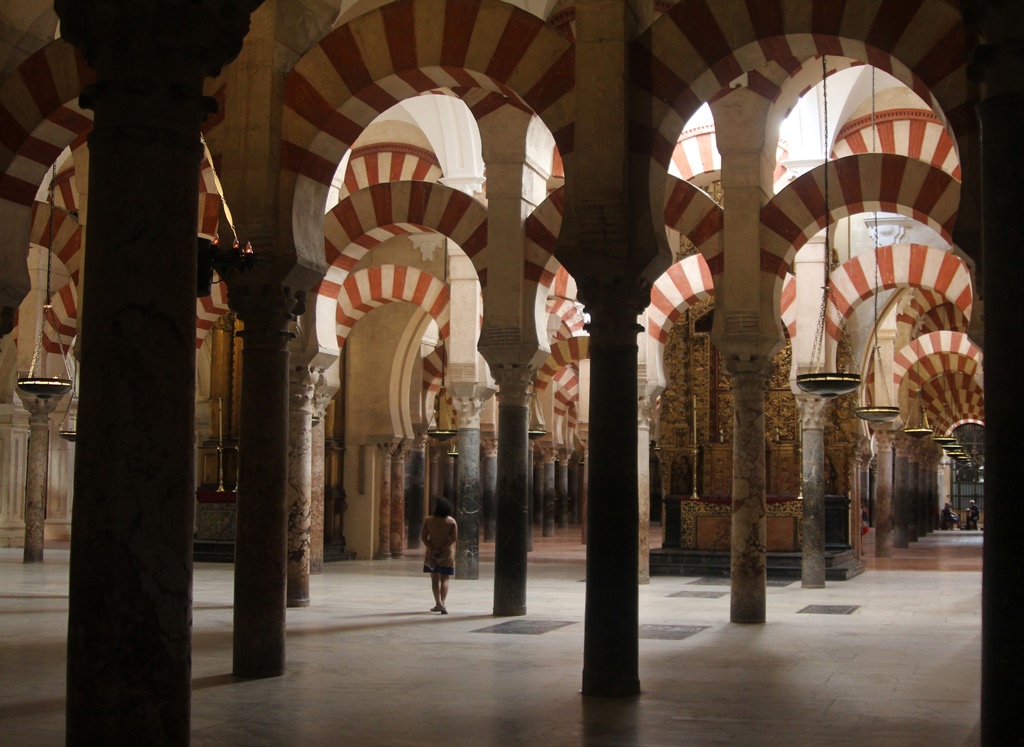
Columns and Arches

Another Corridor
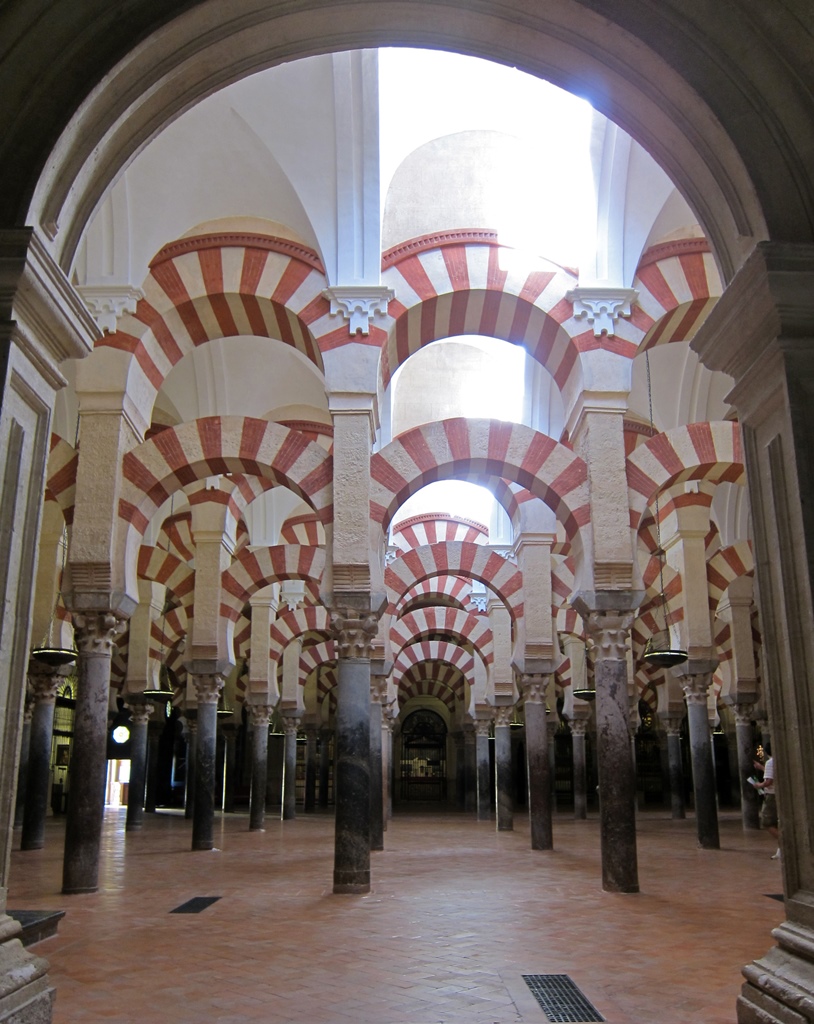
Arches and Columns

Nella with Columns and Arches

Arches and Columns

Arches
Nella Amongst Arches
The arch-supporting columns in the mosque number 850, and were mostly appropriated by the Moors
from Roman and Visigothic structures and ruins. Most of the arches were created from white stone,
alternated with red bricks. But during the last expansion of the mosque (the Almanzor expansion,
987-990), the builders got a little lazy, just using white stone for the new arches and painting
in the red stripes (probably schedule constraints or budget cuts). But regardless of the
construction method used, the arches are all still standing (except for the ones that have been
removed – more on this later).
Speaking of Visigoths, the mosque was built on the site of a 6th Century Visigothic church known
as the Basilica of San Vicente (the Visigoths converted to Christianity around this time), and
there is a small museum displaying Visigothic artifacts in the southwest corner of the mosque. At
one point in the mosque there is a window in the floor, through which a section of floor mosaic
from the Basilica can be seen, below the level of the mosque.
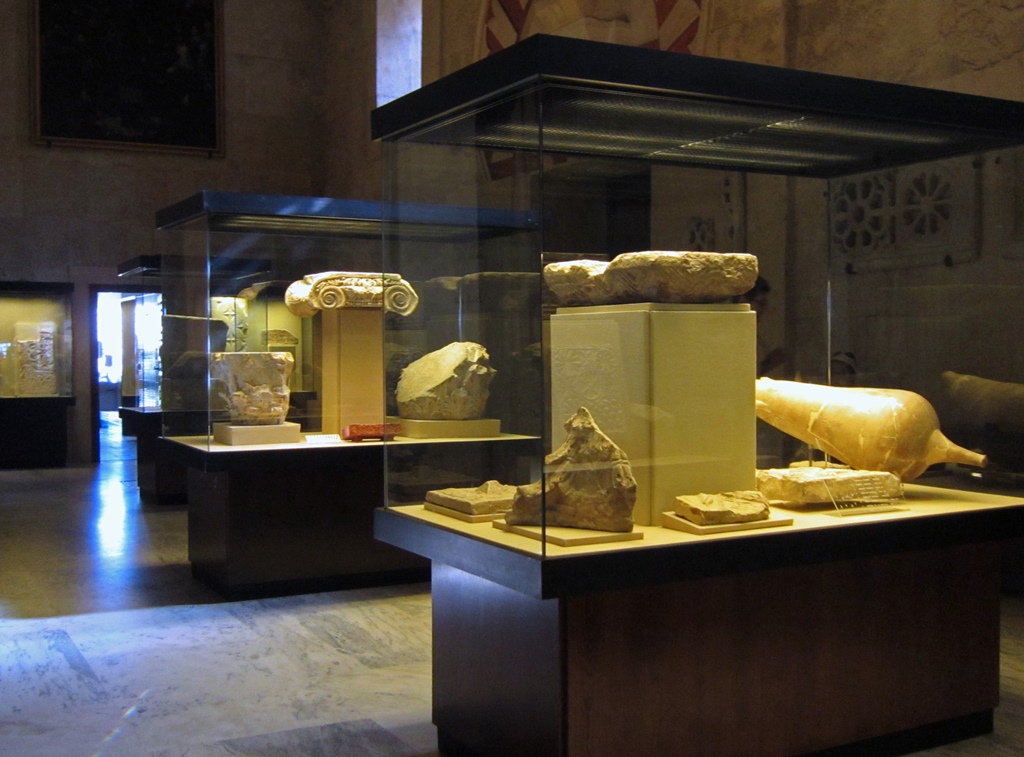
Displays, Visigoth Museum of San Vicente
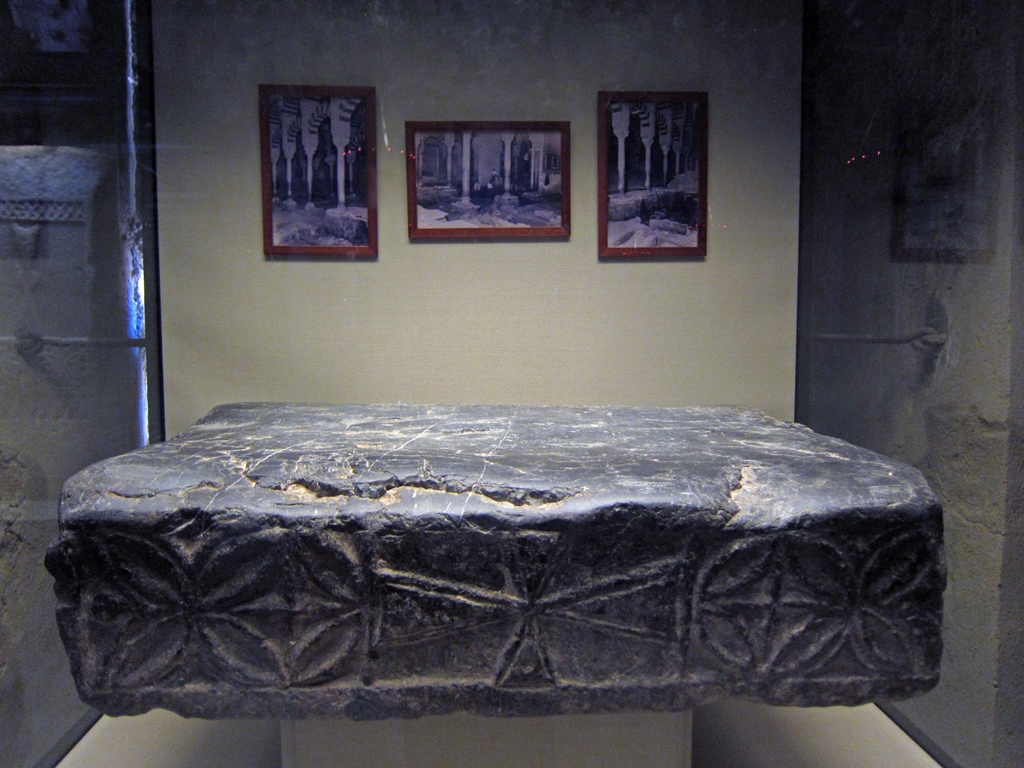
Excavated Fragment, Visigoth Museum of San Vicente
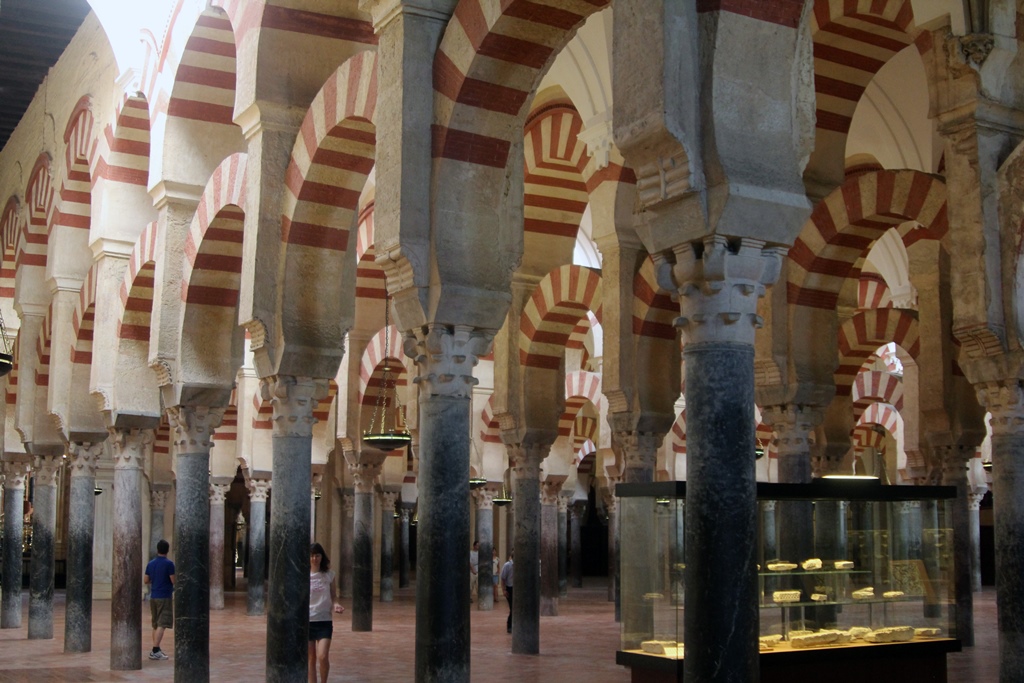
Columns, Arches and Display Case
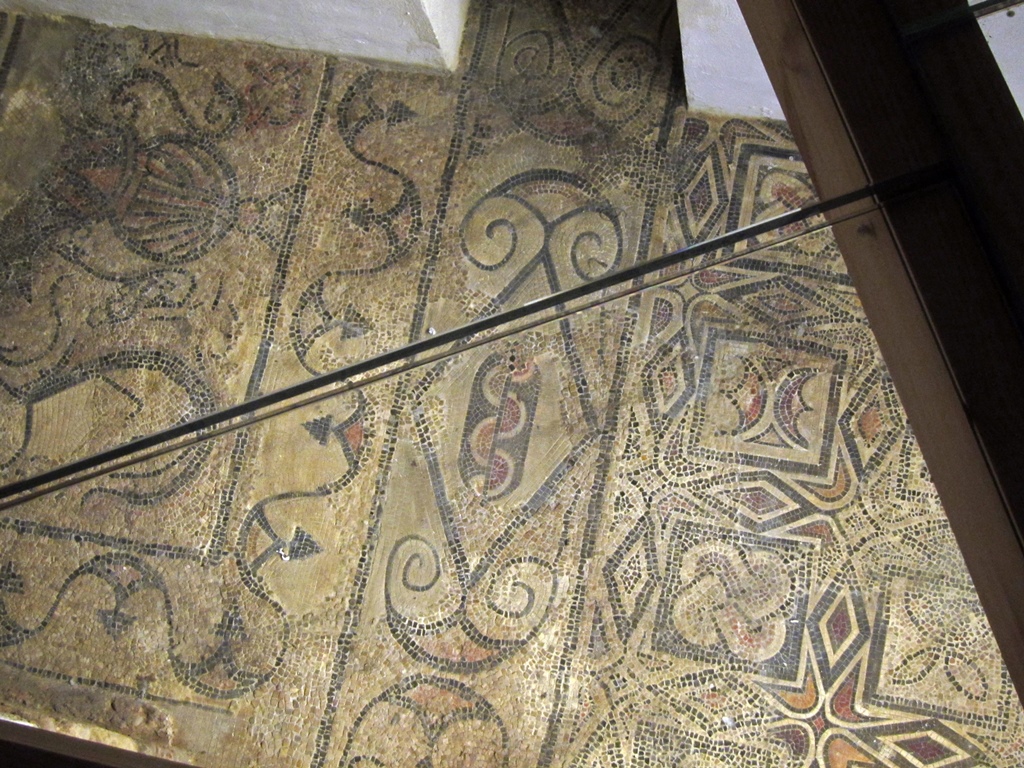
Floor Mosaic of Original Basilica of San Vicente
Foundation Stone of a Building Outside the Mosque
In the south wall of the Mezquita we found an area with three elaborate Moorish doorways. The
doorways on the left and right were intricately decorated, but held closed doors and appeared
to be partially blocked with plywood. But the doorway in the middle was a special doorway,
called the Mihrab, which was used to indicate the direction of the holy city of Mecca, the
direction in which all good Muslims should be praying. This doorway was the most decorated of
the three and did not have any doors, though it seemed to lead only to a small chamber with
nothing of obvious note in it. Apparently the Mihrab has interesting acoustic properties which
cause the voice of someone speaking into it to be reflected and amplified, useful for someone
leading prayers for a Mezquita-full of worshipers. The Mezquita's Mihrab dates to the next-to-last
expansion (the al-Hakam II expansion, 961-966), and was retained during the Almanzor expansion.
The area in front of the three doors, called the Maqsura, is surrounded by a low railing to
separate the leaders from the rest of the congregation. In front of each door, in the ceiling
above the Maqsura, there is a decorated domelike structure which lets in a certain amount of
sunlight.

Archway Toward Mihrab
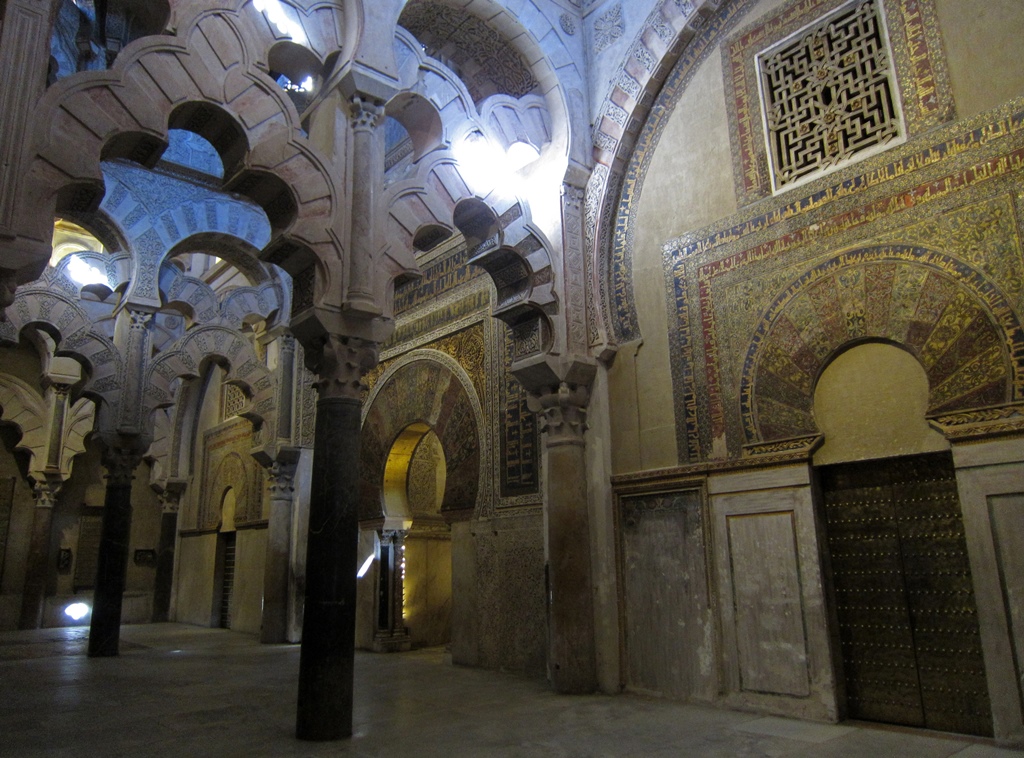
Maqsura Area

East Maqsura Area
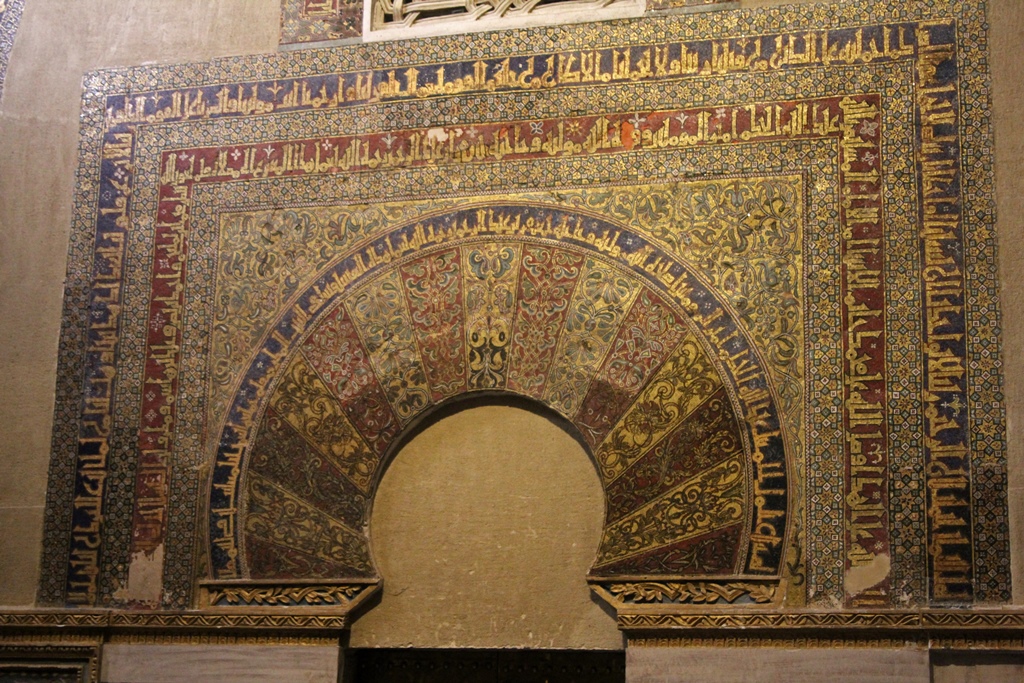
Above West Door
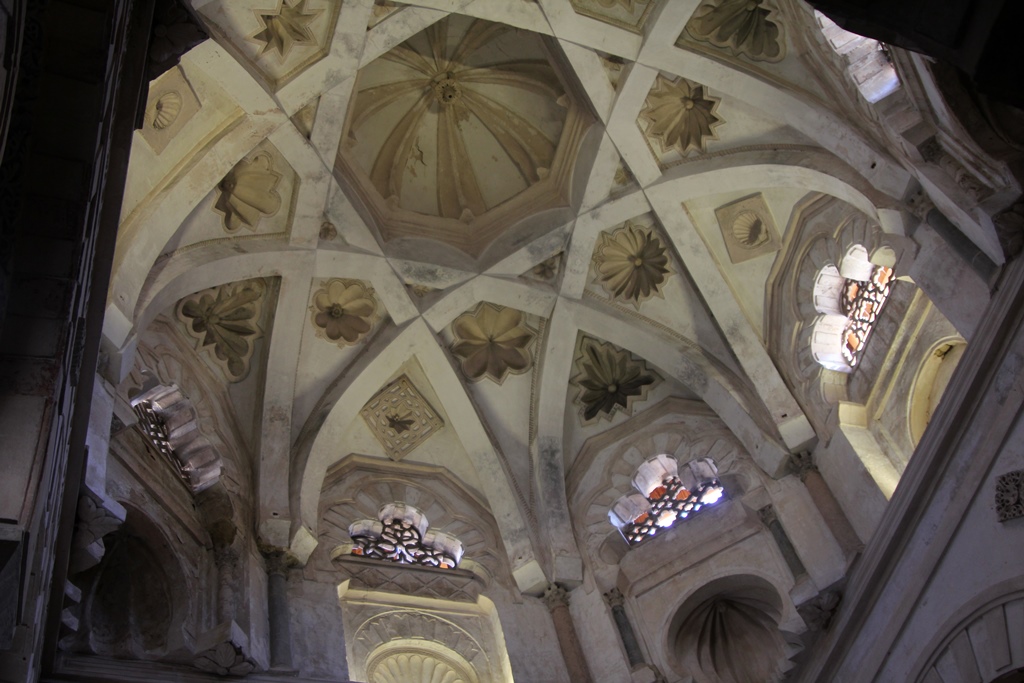
Dome Above West Door

Mihrab of Al-Hakam II
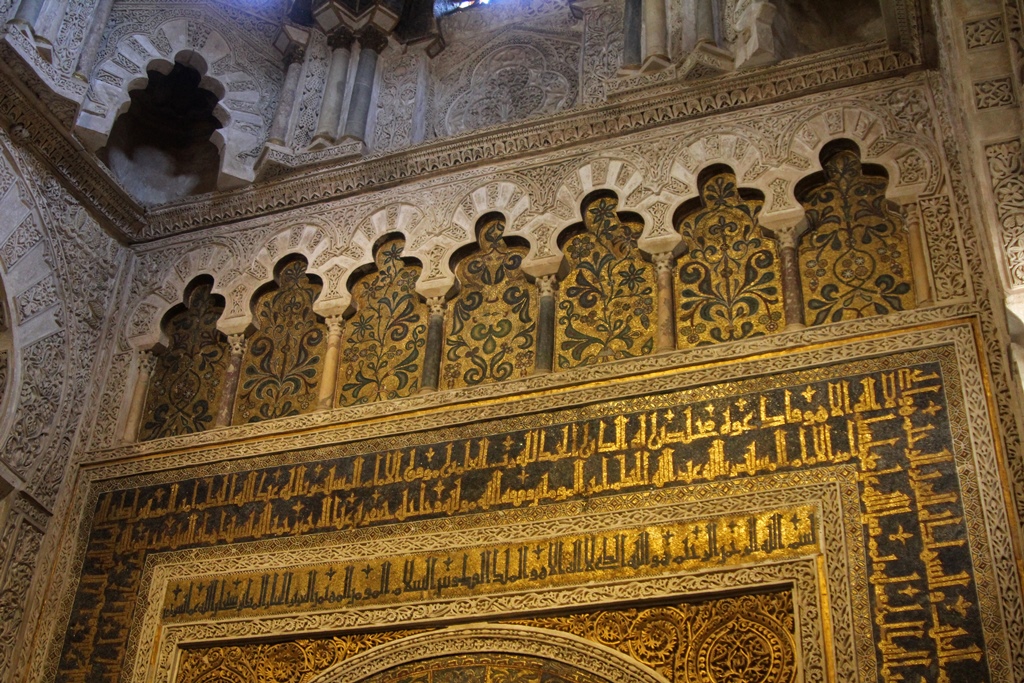
Above Mihrab of Al-Hakam II

Dome Above Mihrab of Al-Hakam II
West Door and Mihrab of Al-Hakam II
If you've been paying attention, there's a question which you might be asking yourself. When
Muslims pray toward Mecca, don't they pray to the east? And if the Mihrab is in the south
wall of the Mezquita, wouldn't all of the prayers in the Mezquita have been off by 90 degrees?
A worthy question – thanks for bringing it up, smarty-pants. As it turns out, Spain is
considerably east of, say, the U.S., and the direction of Mecca from Spain isn't so much due
east as it is an ESE direction. And the Mezquita, due to early construction considerations,
isn't oriented precisely north-south, but in more of a NNW-SSE direction. Combined, these
considerations reduce the direction error to 51 degrees. During the planning for the mosque's
last expansion, apparently the idea had been brought up to reorient the entire mosque, but
for whatever reason, this idea was not pursued (this would have been a Big Job). If you want
to know whether the 51 degree offset affects one's chances for a happy afterlife, you're
asking the wrong person.
Lighting within the Mezquita varies from place to place. In some areas there are skylights
which let in significant sunlight, but other areas are quite dim. In the olden times, many
of the surrounding doors would be opened to let in light, but this is no longer an option, as
most of these doors are now closed and blocked. There are a few screened windows, such as
this one, which points toward the Patio de los Naranjos and the exit, but they don't add much
light.

Screened Window
But we're not ready to leave the Mezquita just yet. Again, you should be asking yourself
some more questions. Why is this mosque still here? After the Reconquista, wasn't
Islam (as well as Judaism, or anything other than strict Roman Catholicism) outlawed in Spain?
Didn't the Christians demolish old mosques and build churches on their sites? And what's that
tall thing sticking up out of the middle of the Mezquita? Next time.
Mosque and Fountain of Santa María










